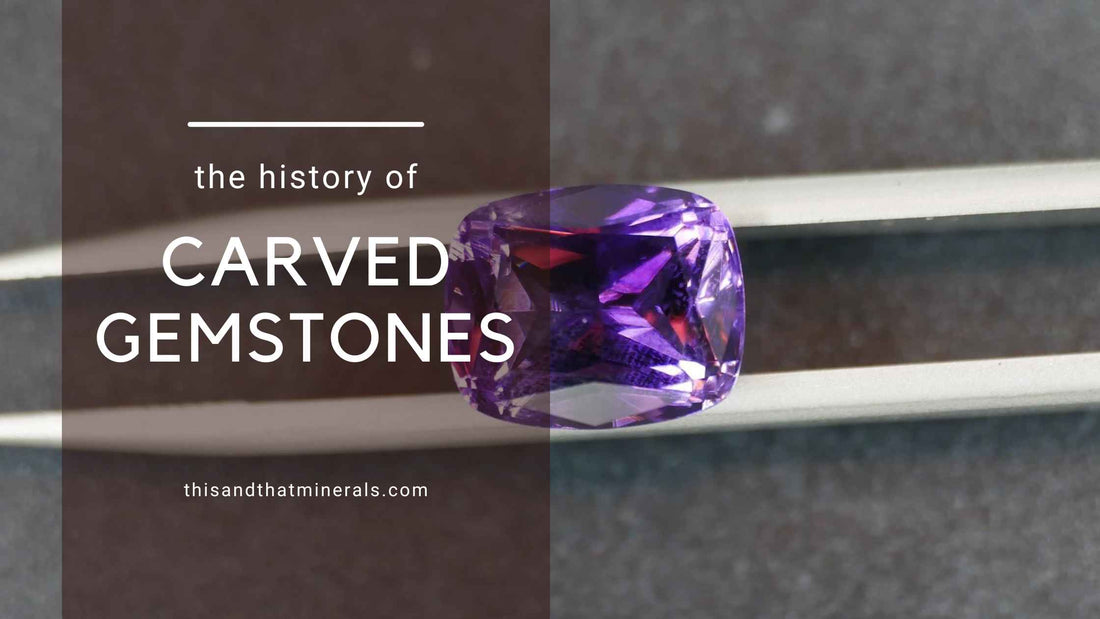
The History of Carved Gemstones
Gemstone carving is a captivating art form that has thrived for thousands of years. It carries deep cultural, artistic, and historical value. From the stunning amulets of ancient Egypt to the contemporary sculptures treasured by collectors today, carved gemstones have a rich narrative worth exploring.
Ancient Civilizations and Their Mastery of Carved Gemstones
Egyptian Amulets and Royal Treasures
Egyptians pioneered gemstone carving, skillfully transforming stones like lapis lazuli, carnelian, and turquoise into beautiful amulets, scarabs, and intricate jewelry. These carvings often represented symbols of power, protection, and the afterlife, such as the renowned Eye of Horus and the ankh. For Egyptian pharaohs and nobles, wearing these detailed creations was more than just a fashion statement; it was a belief that these pieces offered protection and elevated their status.
Greek and Roman Innovations
The Greeks and Romans built upon this foundation, advancing the art of gemstone carving by perfecting intaglios—designs intricately engraved into the stones to create personalized seals and signets. These remarkable carvings showcased mythological figures, expressive animals, and detailed portraits, making a statement when pressed into wax to authenticate important documents. The Romans, in particular, gravitated towards durable stones like onyx, sardonyx, and jasper, relishing their striking contrasts.
Asian and Middle Eastern Artistic Excellence
In regions such as India and China, the artistry of gemstone carving flourished, with jade and agate becoming particularly esteemed. Chinese artisans showcased their remarkable talent by sculpting jade into delicate figurines, while Indian craftsmen created intricate cameos and beads that echoed their culture. The Islamic world also contributed richly to this art, with beautifully etched calligraphy and geometric patterns on agates and carnelians, often serving as talismans or religious artifacts.
The Intricate Process of Carving and Polishing Gemstones
Selection of the Stone
Not every mineral lends itself to the art of carving. Harder stones like quartz, jade, and agate are favored for their durability and capacity to retain detailed features. The selection of a gemstone is guided by the desired aesthetic, translucency, and workability, ensuring the final piece evokes beauty and meaning.
Carving Techniques
Gemstone carving is a labor of love, a meticulous craft that calls for patience and expertise. Some of the most captivating techniques include:
- Intaglio & Cameo Carving: Engraving designs into the stone (intaglio) or elevating them above the surface (cameo).
- Relief Carving: Crafting figures and patterns that leap from the background.
- Faceting & Polishing: Smoothing the surface and adding depth through intricate cuts, amplifying the stone’s inherent beauty.
Modern Technology Enhancing Artistry
While traditional hand-carving methods remain cherished, modern technology has introduced innovative techniques like laser engraving and ultrasonic carving, allowing for exquisite precision and complex designs. Technology integration has broadened the horizons of gemstone artistry, making it more accessible and diverse.
The Everlasting Appeal of Carved Gemstones
Collector’s Passion
Carved gemstones hold a special place in the hearts of collectors who appreciate their historical importance and artistic craftsmanship. Unique pieces, especially those tracing back to ancient civilizations or crafted by renowned artisans, can serve as valuable investments that tell compelling stories.
Cultural and Artistic Resonance
From captivating museum displays to cherished personal collections, carved gemstones enchant enthusiasts around the globe. Their ability to preserve history, narrate tales, and showcase the creative spirit of humanity ensures their timeless allure.
Modern Applications and Personal Touch
Today, gemstone carvings are delightful in luxury jewelry, home décor, and fashion. Personalized gemstone carvings featuring animal figures, floral motifs, and abstract sculptures are gaining popularity in mainstream and niche markets. Their uniqueness adds character and charm to any collection.
Conclusion
Carved gemstone art connects the past with the present, reflecting humanity's creativity and appreciation for nature's beauty. Whether discovered in an ancient tomb or displayed in a modern collection, these intricate carvings remain cherished treasures.
PIN IT


